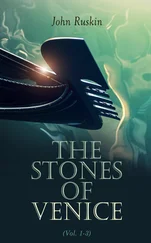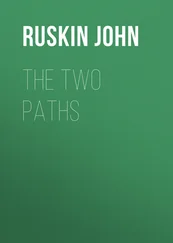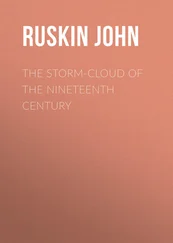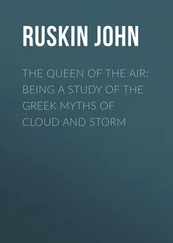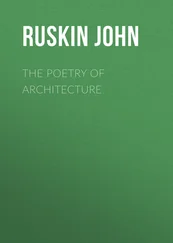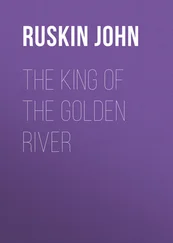John Ruskin - On the Old Road, Vol. 2 (of 2)
Здесь есть возможность читать онлайн «John Ruskin - On the Old Road, Vol. 2 (of 2)» — ознакомительный отрывок электронной книги совершенно бесплатно, а после прочтения отрывка купить полную версию. В некоторых случаях можно слушать аудио, скачать через торрент в формате fb2 и присутствует краткое содержание. Жанр: foreign_antique, foreign_home, literature_19, visual_arts, на английском языке. Описание произведения, (предисловие) а так же отзывы посетителей доступны на портале библиотеки ЛибКат.
- Название:On the Old Road, Vol. 2 (of 2)
- Автор:
- Жанр:
- Год:неизвестен
- ISBN:нет данных
- Рейтинг книги:3 / 5. Голосов: 1
-
Избранное:Добавить в избранное
- Отзывы:
-
Ваша оценка:
- 60
- 1
- 2
- 3
- 4
- 5
On the Old Road, Vol. 2 (of 2): краткое содержание, описание и аннотация
Предлагаем к чтению аннотацию, описание, краткое содержание или предисловие (зависит от того, что написал сам автор книги «On the Old Road, Vol. 2 (of 2)»). Если вы не нашли необходимую информацию о книге — напишите в комментариях, мы постараемся отыскать её.
On the Old Road, Vol. 2 (of 2) — читать онлайн ознакомительный отрывок
Ниже представлен текст книги, разбитый по страницам. Система сохранения места последней прочитанной страницы, позволяет с удобством читать онлайн бесплатно книгу «On the Old Road, Vol. 2 (of 2)», без необходимости каждый раз заново искать на чём Вы остановились. Поставьте закладку, и сможете в любой момент перейти на страницу, на которой закончили чтение.
Интервал:
Закладка:
You would be in favor of those fellowships?—Yes.
190. I gather that you are in favor of the encouragement of mural decoration, fresco painting, and so forth. The system that prevails abroad, in France, for instance, is for painters to employ pupils to work under them. It was in that way that Delaroche painted his hemicycle at the Académie des Beaux-Arts, employing four pupils, who worked for him, and who from his small sketch drew the full-sized picture on the walls, which was subsequently corrected by him. They then colored it up to his sketch, after which he shut himself up again, and completed it. On the other hand, if you go to the Victoria Gallery in the House of Lords, you find Mr. Maclise at work on a space of wall forty-eight feet long, painting the Death of Nelson on the deck of the "Victory," every figure being life size, the deck of the ship and the ropes and everything being the actual size, and you see him painting with his own hand each little bit of rope and the minutest detail. Which of the two systems do you think is the soundest and most calculated to produce great and noble work?—The first is the best for the pupils, the other is the best for the public. But unquestionably not only can a great work be executed as Mr. Maclise is executing his, but no really great work was executed otherwise, for in all mighty work, whether in fresco or oil, every touch and hue of color to the last corner has been put on lovingly by the painter's own hand, not leaving to a pupil to paint so much as a pebble under a horse's foot.
191. Do you believe that most of the works of the great masters in Italy were so executed?—No; because the pupils were nearly as mighty as the masters. Great men took such an interest in their work, and they were so modest and simple that they were repeatedly sacrificing themselves to the interests of their religion or of the society they were working for; and when a thing was to be done in a certain time it could only be done by bringing in aid; but whenever precious work was to be done, then the great man said, "Lock me up here by myself, give me a little wine and cheese, and come in a month, and I will show you what I have done."
Do you think it desirable that the pupils should be so trained as to be capable of assisting great masters in such works?—Assuredly.
Note.—The following analysis of the above evidence was given in the Index to the Report (pp. 139, 140).—Ed.
168-69. The Academy not in all points satisfactory. Would wish to see the Academicians not self-elected.—But by a constituency consisting both of artists and the public.—Public influence to be the same in painting as in music.
170. As to the Associates: is in favor of some period of probation.—Their class to be unlimited, with a very limited number of Academicians.
171. Has formed no opinion on the question of introducing laymen into the Academy; in matters of revenue they might be joined with artists, but not in the selection and hanging of pictures: opposed on the whole to their introduction, considering the present state of art education.—As he would like to see the Academy constituted, thinks the president ought to be an artist.
172. General effect of the Academy's teaching upon the art of the country merely nugatory.—Would have a much more comprehensive system of teaching.
173. The Academy education to correspond wholly to the University education.
174. Not easy but very necessary for the Academy to adopt an authoritative system of teaching.
175. His idea of what the Academy teaching should be; would have a school of chemistry.
176. The teaching of wall-painting in permanent materials should be a branch, possibly the principal branch.
177. Not satisfied with the selection of artists to be members of the Academy.
178. In some cases the selection of pictures has been injudicious, but this a matter of small importance; the main point is how the pictures that are admitted are to be best seen.
179. In favor of an educational test for candidates for admission into the Academy.
180. And of professors of art at the Universities.
181. Causes of the want of refinement observable in many modern pictures; the large prices they fetch harmful.
182. Teaching by visitors constantly changing mischievous.
183. How a picture should be hung.—An ill-worked picture ought not to be admitted by the Academy.—Bearing of this last opinion upon the present Exhibition.
184. Would have works of sculpture placed permanently in the painting-room, but not any of those sent in for the Exhibition of the year.
185. In favor of the present honorary members being made of use in their positions.
186. Introduction of laymen into the Academy deprecated under present circumstances, and why.—Present feeling towards art and artists at the Universities.
187. Desirable that Government grants should be made to obtain for the pupils of the Academy beautiful examples of every kind of art.
188. In favor of separate exhibitions of the works of Associates (or Graduates) and Academicians.
189. In favor of art-fellowships, but not of a fixed school in connection with the Academy at Rome.
190. Comparison of the French, and English systems (as regards assistance from pupils) in the production of great public paintings.
191. How the works of the Italian masters were executed.—Desirable that pupils should be trained to assist great masters in public works.
A MUSEUM OR PICTURE GALLERY: ITS FUNCTIONS AND ITS FORMATION. 4 4 These letters are reprinted from the Art Journal of June and August 1880, where they were prefaced with the following note by the editor in explanation of their origin:—"We are enabled, through Mr. Ruskin's kindness, to publish this month a series of letters to a friend upon the functions and formation of a model Museum or Picture Gallery. As stated in our last issue the question arose thus:—At the distribution of the prizes to the School of Art at Leicester by Mr. J. D. Linton and Mr. James Orrock, members of the Institute of Painters in Water Colors, the latter, after stating the vital importance of study from nothing but the finest models, and expressing his regret that the present price of works of Art of the first class rendered their attainment by schools almost prohibitory, offered drawings by William Hunt and David Cox as a nucleus for a collection. He urged others to follow this example, and with so much success that a few days saw a large sum and many works of Art promised in aid of a students' gallery. The attention of the Leicester Corporation was thereupon drawn to the movement, and they at once endeavored to annex the scheme to their Museum. Failing in this, they in friendly rivalry subscribed a large sum of money, and the question at once arose how best to dispose of it, each naturally thinking his own ideas the best. At this juncture Mr. Ruskin's aid was invoked by one section of the subscribers, and he replied in a letter which, owing to its having been circulated without its context, has been open to some misconstruction. As he was only asked, so he only advised, what should not be done. However, the letter bore its fruits, for both parties have had the attention of the country drawn to their proposals, and so are now more diffident how to set about carrying them into effect than they were before. Under these circumstances Mr. Ruskin has been induced to set out the mode in which he considers an Art Museum should be formed." The letter which was "open to some misconstruction" may be found in Arrows of the Chace .
My dear –,
192. If I put off writing the paper you asked me for, till I can do it conveniently, it may hang fire till this time next year. If you will accept a note on the subject now and then, keeping them till there are enough to be worth printing, all practical ends may be enough answered, and much more quickly.
Читать дальшеИнтервал:
Закладка:
Похожие книги на «On the Old Road, Vol. 2 (of 2)»
Представляем Вашему вниманию похожие книги на «On the Old Road, Vol. 2 (of 2)» списком для выбора. Мы отобрали схожую по названию и смыслу литературу в надежде предоставить читателям больше вариантов отыскать новые, интересные, ещё непрочитанные произведения.
Обсуждение, отзывы о книге «On the Old Road, Vol. 2 (of 2)» и просто собственные мнения читателей. Оставьте ваши комментарии, напишите, что Вы думаете о произведении, его смысле или главных героях. Укажите что конкретно понравилось, а что нет, и почему Вы так считаете.

